
Albuca bracteata, is known by the common names pregnant onion, false sea onion, and sea-onion. It is a species of bulbous flowering plant in the family Asparagaceae. Its flowering stems can reach a height of 90 cm and can carry up to 100 greenish white flowers.

Albuca is a genus of flowering plants in the family Asparagaceae, subfamily Scilloideae. The genus is distributed mainly in southern and eastern Africa, with some species occurring in northern Africa and the Arabian Peninsula. Plants of the genus are known commonly as slime lilies.
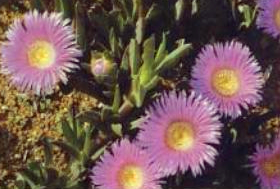
Carpobrotus muirii is a succulent perennial of the family Aizoaceae, native to the Overberg region in the Western Cape, South Africa.

Haworthia cooperi is a diverse and varied species of the genus Haworthia in the family Asphodelaceae, endemic to the Eastern Cape Province in South Africa.

Albuca shawii is a species of bulbous plant from southern Africa. It flowers in the summer and has yellow flowers on stems to about 30 cm high.
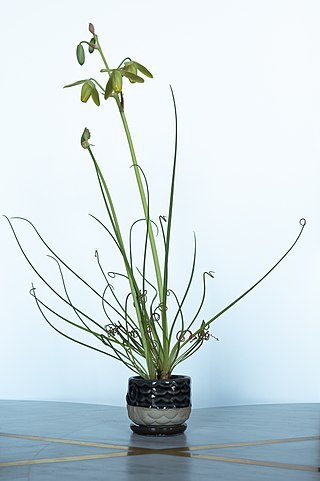
Albuca spiralis, commonly called the corkscrew albuca or frizzle sizzle, is a species of flowering plant in the family Asparagaceae, that is native to Western and Northern Cape Provinces, South Africa.
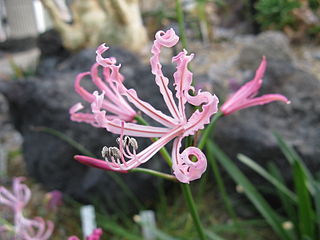
Nerine humilis, commonly known as dwarf nerine, is a species of flowering plant in the subfamily Amaryllidoideae of the family Amaryllidaceae, native to the Cape of South Africa. Growing to 40 cm (16 in) tall, it is a variable (polymorphic) bulbous perennial with narrow leaves appearing at the same time as umbels of 1-12 slender, crenellated flowers in shades of pink, in autumn. It is a summer dormant deciduous species, meaning that the top growth disappears for a period during summer months. Plants can be found in large colonies in their native habitat, the Fynbos of the Cape Floristic Region, appearing to respond well to the frequent fires in the area.

Pteronia paniculata is a species of flowering plant in the family Asteraceae, indigenous to the Karoo regions of South Africa.
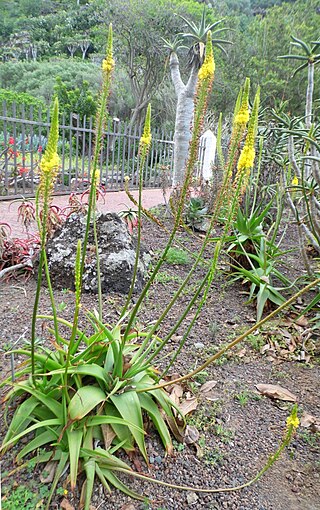
Bulbine alooides ("Rooistorm") is a species of geophytic plant in the genus Bulbine. It is endemic to South Africa, where it grows in the Cape Provinces, KwaZulu-Natal, and Northern Provinces. It is widespread in rocky areas in the southern Cape Region.
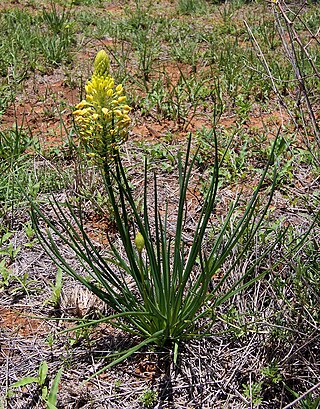
Bulbine abyssinica is a species of plant in the genus Bulbine, from eastern and southern Africa.

Drimia exuviata ("Gifbol") is a species of flowering plant in the family Asparagaceae, subfamily Scilloideae, indigenous to the south-western parts of South Africa.
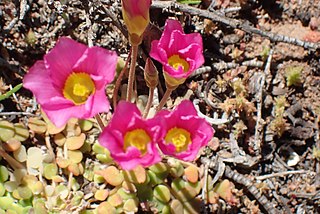
Oxalis inaequalis is a bulb-forming species of flowering plant in the wood sorrel family. It is native to South Africa's Cape Provinces. Each plant produces a rosette of up to 70 succulent leaves, which occasionally produce aerial bulbs. The flowers are yellow and copper-coloured. The sepals are of unequal sizes, hence the specific epithet "inaequalis", which is Latin for "unequal".

Ornithoglossum undulatum, also known as the Karoo Slangkop, is a species of flowering plant in the family Colchicaceae. It is found in Southern Namibia and South Africa. In South Africa its range extends as far east as Somerset East in Eastern Cape Province. O. undulatum is a poisonous plant, and consumption of the leaves can kill livestock.

Chrysocoma ciliata is a shrub that grows to a height of 60 cm. The plant occurs throughout South Africa with the exception of Limpopo and also in Lesotho, Mozambique, and Namibia. In the Western Cape and the Eastern Cape it occurs along with the fynbos on rocky slopes and rocky plains.

Albuca juncifolia is a bulbous flowering plant, placed in the genus Albuca in the subfamily Scilloideae of the family Asparagaceae.
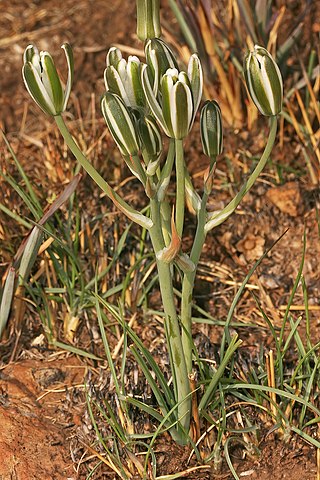
Albuca setosa is a species of small, perennial, bulbous plant in the asparagus family. It is native to the Cape Provinces and KwaZulu-Natal in South Africa.

Albuca acuminata is a species of small, perennial, bulbous plant in the asparagus family. It is native to southern Africa from Namibia to the Cape Province of South Africa, where it occurs in rocky areas, as far east as Port Alfred.

Albuca longipes is a species of small, perennial, bulbous plant in the asparagus family that is widespread across the western portion of southern Africa. It occurs throughout the winter-rainfall regime, from southern Namibia in the north, southwards as far as Cape Town, and eastwards as far as Willowmore.
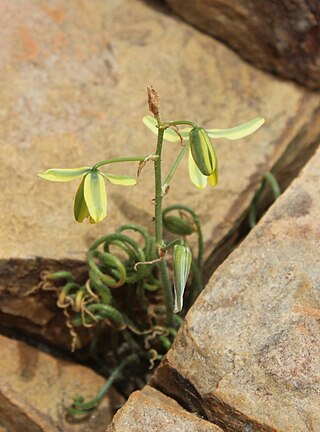
Albuca viscosa, commonly called the sticky albuca, is a species of flowering plant in the family Asparagaceae, that is native to Western and Northern Cape Provinces, South Africa.
Lachenalia variegata, also known as the spotty viooltjie, is a species of plant from the Western Cape of South Africa.


















